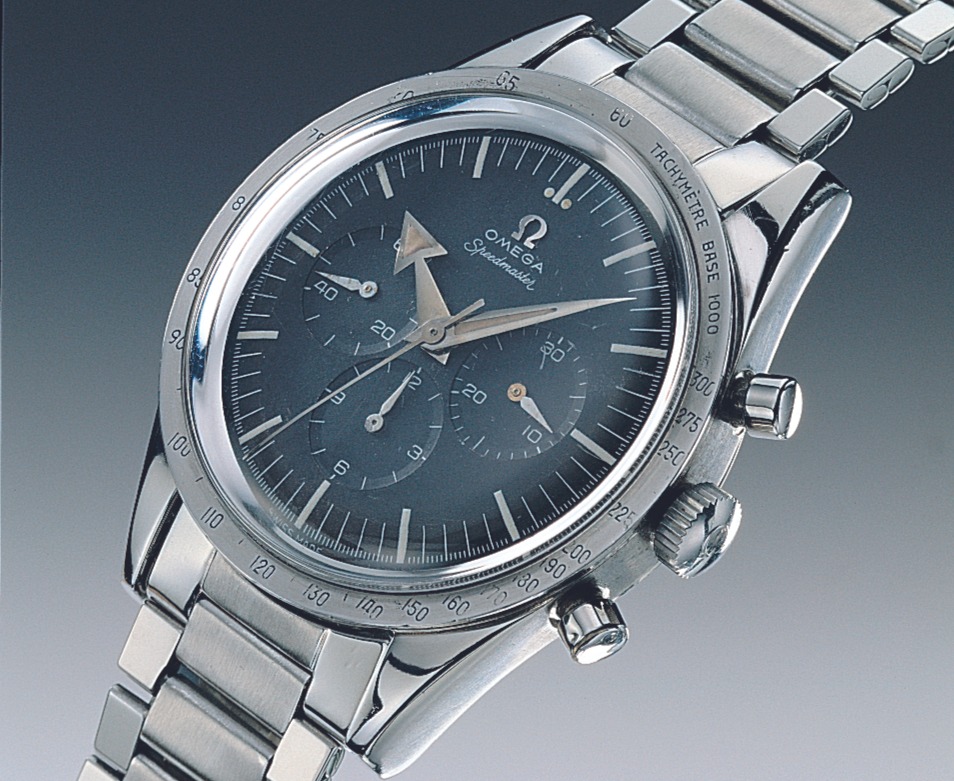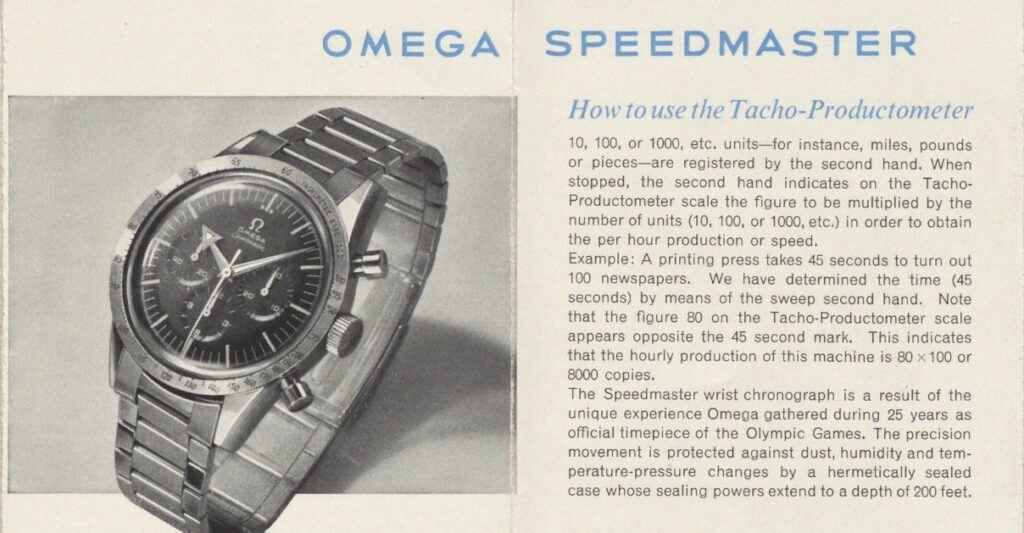
Like most watch fans, I love Speedmasters. While I only ever own a few watches at a time (compulsive minimalist tendencies), the Speedy is the only reference that I’ve simultaneously possessed in different variations. And while this post is about the Speedy before it became associated with space, I must confess that if it weren’t for the whole space thing, I just don’t know if I would have fallen under the charm in the first place.
I remember the first time I put a Moonwatch on my wrist, having borrowed it from my friend Dario (yes, him again), on a black Nato. I just sank into the soothing black dial, my heart warmed by the hesalite glass, suddenly feeling a sense of deep calm. “If they could handle the chaos of Apollo 13 with this watch, you should be able to finish that presentation in time to pick the kids up at school and not get *too* dramatic about it”, I said to myself, staring at it. A few months later, my wife got me my own. Many of my watches have come and gone. While this one could make it to the Moon, it’s staying with me.
As most aficionados know, the Speedmaster’s space destiny was not by design. The watch got picked up along the way, at first privately, then officially, by NASA. If you want to read more on the topic, Fratello is probably the best online source for in-depth Speedmaster knowledge. More modestly, my blog post from when I started Made in Bienne gives an overview of the Speedy history in Apollo missions, in particular Apollo 13. Okay, as mesmerizing as it can get, enough about space, let’s get back to Earth: most people into watches also know that the Speedmaster was originally designed for automobile racing.

The original Speedmaster, reference CK 2915, above, was the first watch with a tachymeter on the bezel. It was released in 1957, alongside the two other members of the Trilogy, the Seamaster and the Railmaster (a reference since “absorbed” as part of the Seamaster collection). The larger and more visible bezel made it a lot easier to read than having it on the dial, the réhaut or the glass, as was typically done until then. The basic idea is that the indications on the bezel correspond to measures of speed, whether it be kilometers or miles per hour. In order to determine the velocity of a vehicle, the driver or, better and safer, someone outside the car, would time it over 1 kilometer (or mile). If the seconds hand is stopped after 25 seconds for instance, that corresponds to about 185 km/h, as indicated by the corresponding numbers on the bezel.
I am not sure to what extent the watch was extensively used in the world of auto racing. I can’t say I’ve seen many archives or memorabilia suggesting it was the tool of choice among the Heuers or, later, Daytonas out there. But then, who cares? The universe, literally, had greater projects for the Bienne-made chronograph. With thinner hands, the second generation of Speedmasters (CK 2998) was taken out in space by Walter Schirra in 1962. The model’s evolution continued over the years, with the introduction of crown guards and, to ensure they did not disrupt visual harmony, the asymmetric case. As beautiful and useful as those iterations were, I personally still have a very soft spot for the original CK 2915 design. The one on display at the Omega museum is always my favorite part of the exhibit, despite some pretty tough competition (e.g., the watch worn by JFK on his inauguration).
I was pretty stunned when I found out, much later, that the ancestor of the Moonwatch was also meant as a productivity tool for industrial production. In the text below, kindly shared by the team at Omega here in Bienne, you can see the bezel is referred to as a “Tacho-Productometer”. The advertisement goes into detail explaining how the watch can be used to measure the hourly output of a printing factory. “A printing press takes 45 seconds to turn out 100 newspapers. We have determined the time (45 seconds) by the means of the sweep seconds hand. Note that the figure 80 on the Tacho-Productometer scale appears opposite the 45 seconds mark. This indicates that the hourly production of this machine is 80 x 100 or 8000 copies.” Boom! A computer on the wrist.

Not only does this use case make the watch seem even more clever, more versatile, it brings the Speedy a lot closer to home. Granted, I don’t work in a factory, and if I did, I would have way more modern tools to measure output nowadays. But the factory environment still feels a lot more realistic to me than car racing (assuming being late for dropping the kids at basketball does not count) or going into space (assuming taking the kids to scooter around the Lunar Module replica outside the Omega boutique in Bienne does not count).
While so much of the Speedmaster design has changed, the layout and function on the bezel has remained mostly identical (let’s please not start talking about dots over 90, just not today). My fairly recent Moonwatch still has a “Tacho-Productometer”, just like the original one 65 years ago. Now that I’ve realized that, I feel that I could have legitimately owned a Speedy back then for a practical use other than pretending to be some kind of superhero. This watch, from the onset, was designed *also* for a regular guy like me, with a regular job, who needs to measure stuff to remain productive, day in, day out.
My next mission is to find something to measure. Something that gets produced in less than 60 seconds, at a regular pace over 1 hour. Any suggestions are most welcome, as I’m kind of struggling right now! I promise to demo any suitable proposition.
Images courtesy of Omega




Does checking Instagram every 2 min qualify?